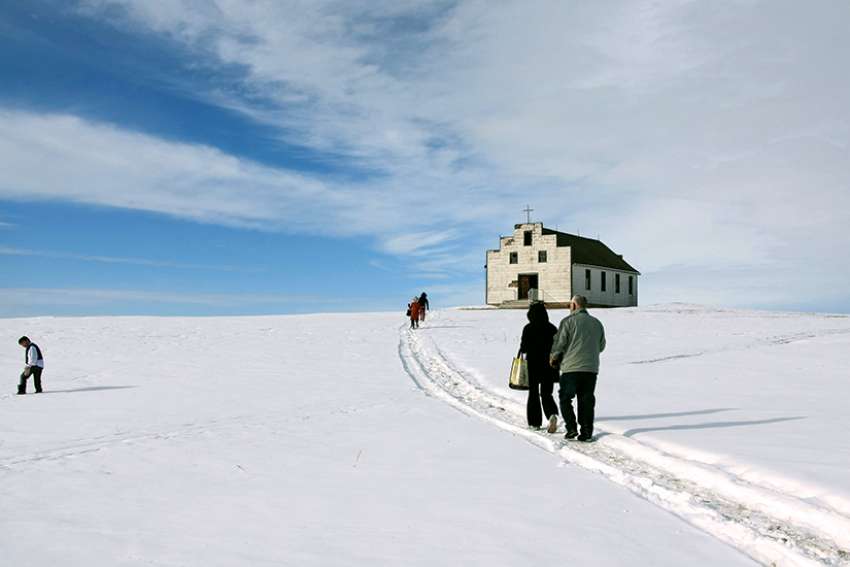John Mraz Sr. is buried on land that’s a part of the family history. It’s land that he first settled with his family in 1895 when they emigrated from Hungary to the Bashaw area, 135 kilometres southeast of Edmonton. A cook in the army, he came looking for adventure and a place to farm.
It is land that Mraz’s son, John Jr. — Nelson’s grandfather — donated for the construction of St. Michael’s Church in 1909. And it’s where he farmed after that first winter in 1895, when he and other Hungarian immigrants slept in sod dugouts while they built new lives in Canada.
“They had taken sod and piled it up to make the walls. That’s what they had to begin with. It was hard,” Nelson said, recalling the family stories. “They left behind a civilized, developed country and came totally to the wilds and plains of Western Canada.”
The struggle and triumph of the Mraz family, and the waves of Hungarian settlers and immigrants, were honoured March 17 in ceremony, prayer and traditional Hungarian folk songs by the Canadian Hungarian Heritage Council and the government of Hungary. The ambassador to Canada unveiled a plaque recognizing the Hungarian diaspora in Alberta.
Over 150 families from across the province gathered at St. Michael’s Cemetery to remember their ancestors, many of whom are buried there. A crucifix and a cairn were installed at the cemetery to honour them and their faith.
“This is where I wanted to be buried,” said Nelson, a grandmother of three, who brought her family to where their Canadian story began more than a century ago. “I feel this is where my roots are and this is where I’ll end up.” Organizers were thrilled that so many families came to one of the only Hungarian settlements in Alberta.
“They’re very attached to it. They’ve kept it going over the years,” said Barry Stotts, president of the St. Michael’s (Manfred) Heritage Society, which maintains the church and cemetery. “There are about five or six families that have maintained it, kept it going, and continue to support it.”
In 1909, John Mraz Jr. donated the land on which St. Michael’s was built — a fact of which he was very proud, Nelson said. The original church was built in 1910 but was later damaged by lightning. The present-day building went up in 1929.
Ninety years later, St. Michael’s is falling apart — the basement has flooded and its walls have caved in, and the building is slated for demolition. The last Mass there was celebrated in 1975.
“That’s a tough one,” Stotts sighed, holding back tears. “But this has been amazing, because we’ve drawn in so many relatives and so many people who have family buried here. This has gone beyond what we have expected. That’s the best part of the whole thing.”
Once the church building has been removed, Stott said the St. Michael’s Society wants to make improvements to the cemetery by adding some landscaping. The crucifix that once stood outside the church, along with the new cairn, will remain a testament to the faith of Hungarian settlers and immigrants.
“Their faith was extremely strong,” Nelson said. “My father told me stories about how, before the church was built, they would meet in family homes and the priest would come out and say Mass. When the priest couldn’t come, they would still gather on Sundays and say prayers together.” Stotts added: “There’s a lot of Catholics and a lot of faith in this area. They stuck together.”
The first wave of settlers came in the 1880s to the Bashaw area. More came in the 1920s and in 1956, when Canada welcomed an estimated 38,000 refugees fleeing Hungary in the wake of the Hungarian Revolution against the communist regime.
Support The Catholic Register
Unlike many other news websites, The Catholic Register has never charged readers for access to the news and information on our site. We want to keep our award-winning journalism as widely available as possible. But we need your help.
For more than 125 years, The Register has been a trusted source of faith based journalism. By making even a small donation you help ensure our future as an important voice in the Catholic Church. If you support the mission of Catholic journalism, please donate today. Thank you.

